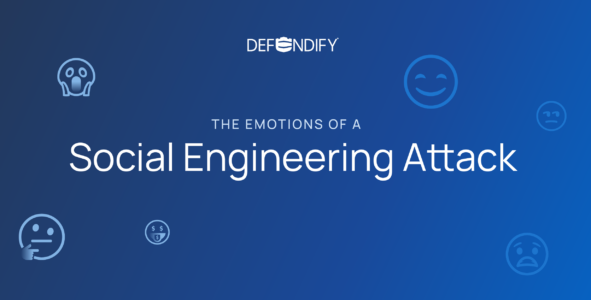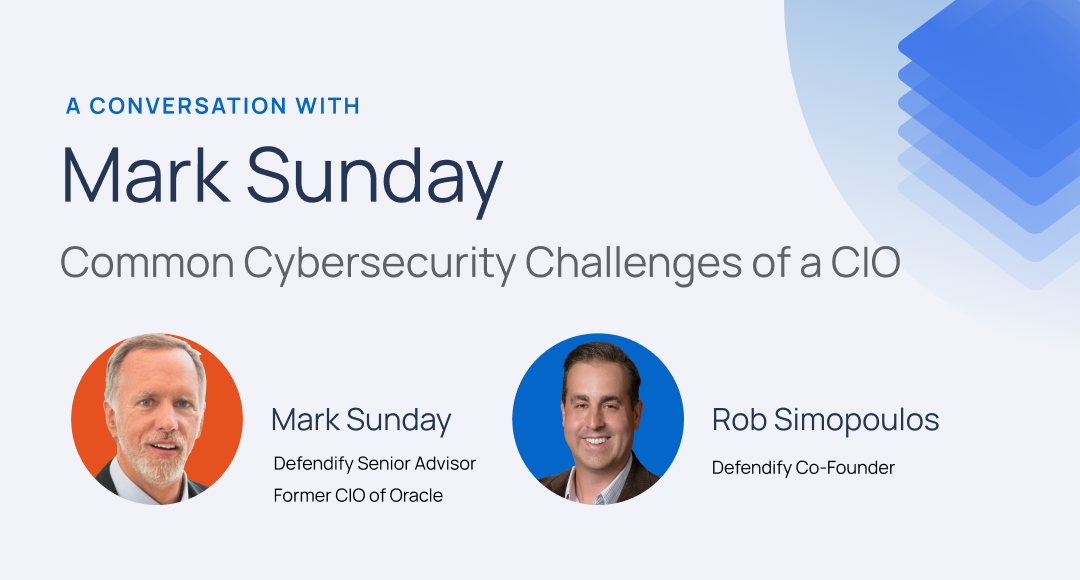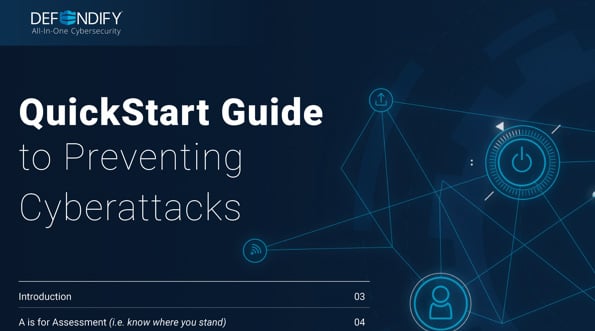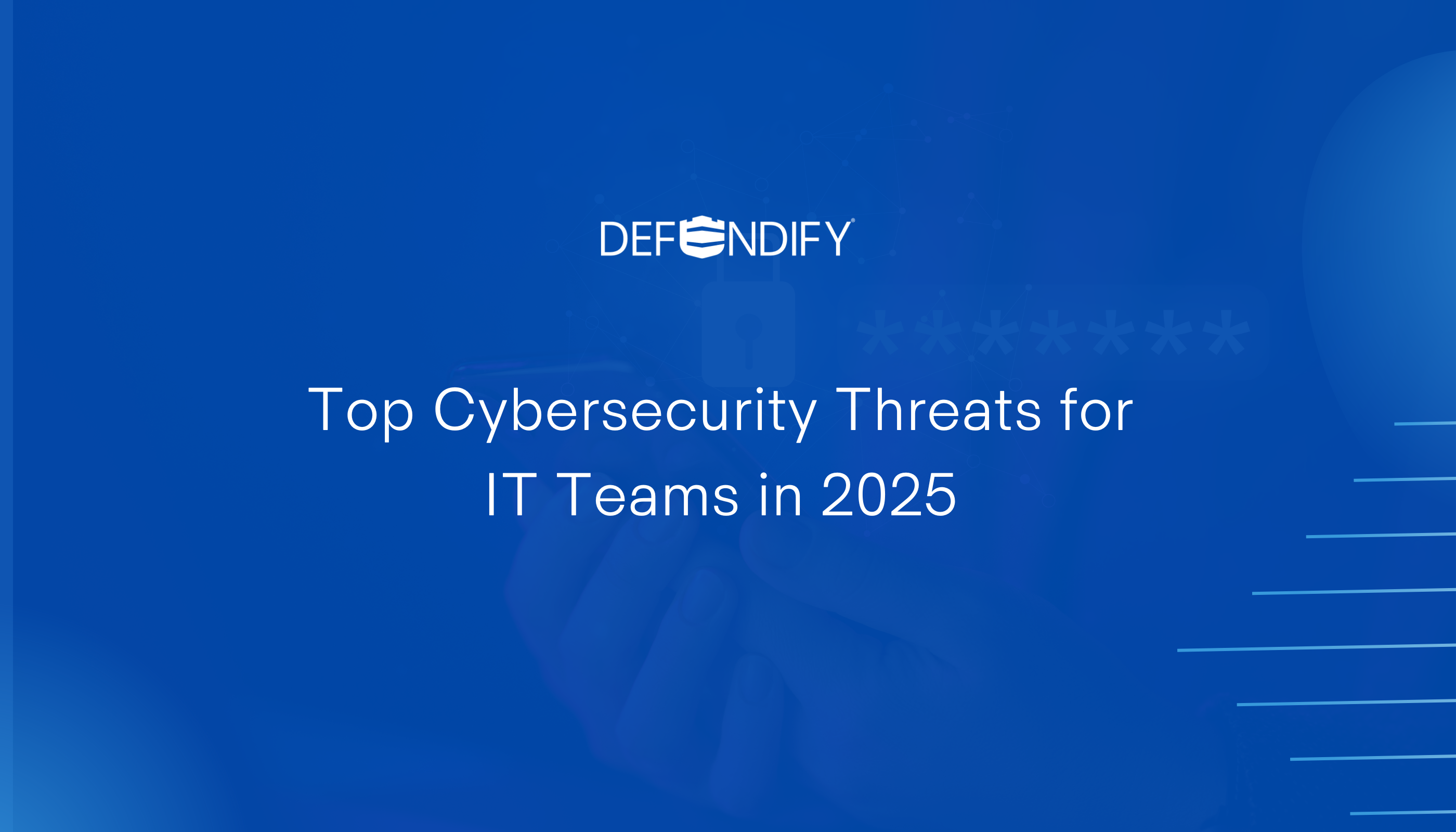Looking ahead to 2025, cybersecurity threats are seemingly getting more intense by the day. Cybercriminals keep finding cleverer ways to break in, with cyberattacks that slip right past old-school defenses. Since most companies can’t afford dedicated security teams, their IT personnel have to juggle protection duties on top of everything else. Things are getting more challenging, and we need fresh ideas to keep the bad actors out.
We’ve pinpointed five key threats expected to dominate cybersecurity conversation in 2025. Let’s break down what they are and how to deal with them. Getting ahead of these threats could be the difference between staying safe and getting caught with your digital pants down.
1. The Persistent Threat of Social Engineering
Why it matters:
Social engineering attacks continue to be a primary concern for a simple reason: they work. Cybercriminals use tactics like phishing attacks and smishing to manipulate users into giving away sensitive information or clicking on malicious links. These attacks exploit human psychology rather than technical vulnerabilities, making them particularly dangerous. Once an attacker gains unauthorized access to an employee’s login credentials, they can potentially access all systems and sensitive data available to that user. If they compromise an administrator’s account, the damage potential increases exponentially. The consequences can range from data breaches to financial loss and reputational damage.
How to fight back:
The key to combating social engineering lies in ongoing cybersecurity awareness training. One-off annual sessions aren’t enough to create lasting behavioral change. Instead, consider implementing a wide-ranging approach:
• Regular formal training sessions to educate users on current tactics and scams
• Daily visual reminders through posters and internal communications
• Periodic, unannounced simulated phishing attacks to keep users alert
• Look for automated solutions that can help manage this process without overburdening your team
In addition to these measures, fostering a culture of security awareness is important. Encourage employees to report suspicious activities without fear of punishment. Implementing a reward system for identifying potential threats can also motivate staff to remain vigilant. Integrating cybersecurity training into the onboarding process ensures that new employees are aware of the risks from day one. By making cybersecurity a shared responsibility, organizations can create a more resilient defense against social engineering attacks.
2. The Ticking Time Bomb: Known Software and Infrastructure Vulnerabilities
Why it matters:
Taking advantage of known vulnerabilities in computer systems and applications is often easier for attackers than finding new ones. Once a vulnerability is disclosed, it’s a race against time to patch systems before they can be exploited. With organizations often running hundreds of applications and relying on various open-source components, keeping everything up-to-date can feel like an impossible task. Throw in a mix of old and new systems working together, and keeping everything patched becomes a real nightmare.
How to fight back:
Implement a reliable vulnerability management program:
• Use vulnerability scanning tools to identify outdated software and vulnerable systems
• Prioritize remediation based on severity and exploitation potential
• Consider partnering with a vulnerability scanning service for continuous monitoring and automatic rule updates
• Establish a patch management process to ensure timely updates
Beyond these steps, it’s important to maintain an inventory of all software and hardware assets. This inventory should include details about the version and patch status of each asset. Regular audits can help ensure that this inventory remains accurate and up-to-date. Additionally, organizations should consider adopting a risk-based approach to vulnerability management, focusing on the most critical vulnerabilities that pose the greatest threat to their operations. By matching vulnerability management with business objectives, IT teams can assign resources more effectively and reduce the risk of exploitation.
3. The Hidden Danger: System Misconfigurations
Why it matters:
Seemingly minor configuration errors can create major security gaps that attackers love to exploit. Whether it’s a misconfigured firewall that leaves ports exposed, default credentials that were never changed, or software applications with coding flaws, these vulnerabilities often go unnoticed until it’s too late. What makes these issues particularly dangerous is that they can exist for months or even years without detection, giving attackers plenty of time to find and exploit them. The impact can range from unauthorized access to sensitive data to complete system compromise, potentially leading to regulatory penalties and significant reputational damage.
How to fight back:
Finding these hidden weaknesses requires a systematic approach that combines automated scanning with human expertise:
- Engage Ethical Hackers to simulate real-world cyberattacks
NOTE: Most organizations cannot justify in-house penetration testers. Trusted partners like Defendify can provide penetration testing for internal or external networks, mobile and web applications. - Conduct regular configuration audits across all systems, particularly focusing on firewalls, software applications and cloud services
- Implement automated configuration management tools to detect and alert on unauthorized changes
- Set up secure coding practices and conduct regular code reviews for custom applications
In addition to penetration testing, organizations might want to consider subscribing to Defendify’s Threat Alerts to stay informed about common configuration pitfalls and emerging security threats. This service can provide valuable insights into the tactics that attackers use to identify and exploit misconfigurations, helping IT teams proactively secure their systems. Additionally, adopting a DevSecOps approach can help integrate security into the software development lifecycle, ensuring that both code quality and security are addressed from the start. By fostering collaboration between development, security, and operations teams, organizations can catch and fix potential vulnerabilities before they make it into production systems.
4. The Persistent Threat: External Actors
Why it matters:
Small and midsize organizations are increasingly attractive targets for cybercriminals. In fact, businesses with fewer than 1,000 employees experienced 67% more data breaches than larger companies in 2023. Once attackers gain a foothold, they can steal data, access financial systems, and install backdoors for future attacks. The motivations behind these attacks can vary, from financial gain to industrial espionage, making it essential for organizations to be prepared for a wide range of threats.
How to fight back:
Detecting and responding to these threats requires constant alertness:
• Partner with a Managed Detection and Response (MDR) provider for 24/7/365 proactive monitoring, containment and remediation
• Implement endpoint protection to block malware and other malicious software
• Leverage active threat hunting across all your IT systems to identify early signs of an attack
To protect against these threats effectively, organizations need comprehensive, around-the-clock monitoring and response capabilities. This is where Managed Detection and Response (MDR) services become crucial. While internal IT teams are essential, they face real-world constraints – they need to sleep, manage multiple priorities, and may not have deep security expertise. MDR fills these gaps by providing 24/7 monitoring and response from dedicated cybersecurity professionals who specialize in threat detection and incident response.
Consider this scenario: When suspicious activity occurs at 3 AM or during your busiest operations, using a MDR service ensures immediate expert analysis, response and containment – without pulling your IT team away from critical business functions (or out of bed). These security specialists maintain current knowledge of evolving threats and attack techniques, providing expertise that would be impractical and costly for most organizations to maintain internally. Additionally, MDR services can help organizations establish clear incident response procedures and communication protocols, ensuring a coordinated approach when threats are detected.
5. The Achilles’ Heel: Poor Incident Response
Why it matters:
Even with the best defenses, some cyberattacks will inevitably succeed. The difference between a minor incident and a major breach often comes down to how quickly and effectively an organization responds. Poor communication and lack of preparation can lead to confusion, delays, and increased damage. An effective incident response plan is important for minimizing the impact of a breach and ensuring a swift recovery.
How to fight back:
Develop and practice a comprehensive incident response plan:
• Create detailed playbooks for different types of incidents—for example, ransomware attacks and lost/stolen IT devices.
• Clearly define roles and responsibilities for each team member
• Include procedures for assessing and triaging incidents
• Consider legal and regulatory requirements in your planning
• Conduct regular practice sessions to keep the team sharp
Organizations should also establish a post-incident review process to identify lessons learned and areas for improvement. This process should involve all relevant stakeholders and result in actionable recommendations to enhance the organization’s incident response capabilities. While many organizations turn to cyber insurance to manage financial risk, Defendify takes this protection a step further by backing our platform with a $1,000,000 cybersecurity warranty. This warranty provides financial assistance in the event of a cyber incident, giving organizations added confidence as they focus on recovery and remediation efforts. Combined with a thorough post-incident review process, organizations can both learn from security incidents and maintain financial stability while strengthening their security posture.
Emerging Threats and Trends
As we head into the new year, several emerging cybersecurity threats deserve attention:
1. Internet of Things (IoT) Device Vulnerabilities: The expansion of IoT devices in both consumer and industrial settings presents new attack areas for cybercriminals. Securing these often-overlooked devices is crucial for protecting critical infrastructure and sensitive data.
2. Supply Chain Attacks: Threat actors are increasingly targeting the supply chain to compromise multiple organizations at once. Robust vendor risk management and secure coding practices are essential to mitigate this risk.
3. AI-Powered Attacks: As artificial intelligence becomes more sophisticated, so do the tools available to cybercriminals. AI-driven malicious code and social engineering attacks may become more prevalent and harder to detect.
4. Quantum Computing Threats: While still in its infancy, quantum computing has the potential to break current encryption methods, posing a significant threat to data security.
5. Insider Threats: Whether intentional or accidental, insider threats remain a significant concern. Implementing least-privilege access policies and monitoring user behavior can help reduce this risk.
Staying Ahead of the Curve
Threats will continue to evolve throughout the year. By focusing on these key areas – social engineering, known and unknown vulnerabilities, external threats, and incident response – IT teams can build a strong foundation for protecting their organizations. The key to success lies in a proactive approach, continuous improvement, and a commitment to staying informed about emerging cybersecurity threats.
Remember, cybersecurity is an ongoing process, not a one-time fix. Regular risk assessments, continuous monitoring, and staying informed about emerging threats are crucial for maintaining a strong security posture. By building a culture of security awareness and investing in the right tools and resources, organizations can reduce their risk and enhance their resilience against malware, ransomware, and other types of attacks. Malicious actors are working harder than ever to trick employees into providing confidential information such as company credit cards or personal data. If not properly trained on threats, employees may accidentally become one of the organizations most vulnerable cybersecurity risks.
To kickstart your cybersecurity efforts, consider taking advantage of full platforms that offer solutions like Managed Detection and Response, vulnerability scanning, training and awareness, and more in one place. These tools can provide valuable insights into your current security stance and help you prioritize your efforts for the challenges ahead. Gone are the days where simple antivirus and firewalls are enough to keep criminal hackers out of your systems.
By staying vigilant and proactive, your IT team can handle the complex cybersecurity challenges of 2025 and beyond, keeping your organization’s data and systems secure in the face of evolving threats. Implementing multi-factor authentication (MFA), regularly updating software, and educating employees about social engineering tactics are all crucial steps in building a robust defense against cybercrime.
The journey may be challenging, but with the right strategies and a commitment to continuous improvement, you can build a resilient cyber defense against today’s threat landscape.
Finally, collaboration and information sharing are essential components of a successful cybersecurity strategy. By working together with industry peers, government agencies, and other stakeholders, organizations can gain valuable insights into emerging threats and best practices for mitigating them. This collaborative approach can help organizations stay ahead of the curve and ensure that they are prepared to face the cybersecurity challenges of the future.
Protect and defend with multiple layers of cybersecurity
Defend your business with All-In-One Cybersecurity®.
Explore layered
security
Learn more about Defendify’s three key layers and All-In-One Cybersecurity®.
How can we help?
Schedule time to talk to a cybersecurity expert to discuss your needs.
See how it works
See how Defendify’s platform, modules, and expertise work to improve security posture.








